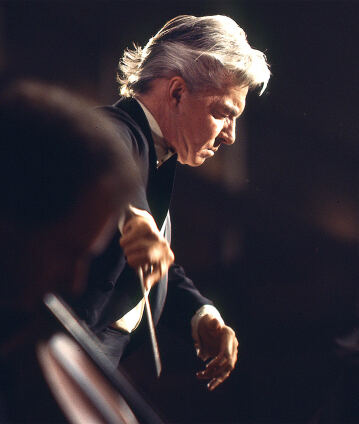Karajan conducts Tchaikovsky’s Symphonies Nos. 4–6

Hardly any other composer bequeathed a legacy of such uninhibitedly emotional music as did Peter Tchaikovsky, who brilliantly fused personal experience and suffering with superb compositional art. It is evident that Herbert von Karajan, master of voluptuous sound and emphasis, was an ideal Tchaikovsky interpreter. In these recordings from 1973 he conducts the last three symphonies, including the famous Pathétique.
The Berliner Philharmoniker’s long and distinguished tradition of Tchaikovsky performance can be traced back to their founding years. Tchaikovsky himself knew and admired the orchestra’s two earliest principal conductors Hans von Bülow and Artur Nikisch. Their inspired advocacy of his music – the last three symphonies in particular – would be continued by their similarly dedicated and charismatic successors Wilhelm Furtwängler and Herbert von Karajan.
In 1929 – at the age of 20 – Karajan conducted Tchaikovsky’s Fifth Symphony at his professional concert debut concert in Salzburg. The Pathétique Symphony followed in Ulm in 1933. He told his parents, “When it was all over, the audience sat as if dead for ten seconds, then bawled their approval as if at a football match.” In 1939, the year after his debut with the Berliner Philharmoniker, Karajan recorded the Pathétique with the orchestra. The artistic self-possession he displayed in his handling of the music was widely noted at the time. By now he also had in his repertoire the tragic yet electrifying Fourth, a work of which he would become one of the great interpreters.
Karajan and his chief cameraman Ernst Wild shot these concert films in Berlin in 1973 at the end of a decade during which he and a group of distinguished avant-garde film directors had changed the way orchestral music was realised on screen. The films reveal Karajan’s work at its vital and imaginative best. They are also a visual reminder of some of the qualities which the critic of the Salzburger Volksblatt had noted in Karajan’s debut concert in 1929: “Not a declamatory conductor but a leader of suggestive power”, “baton technique and posture calm”, “the primeval power of his musicality”. Forty years on, all this – and more – is vividly on display.
© 1973 Unitel
Artists
Our recommendations
- Karajan conducts Beethoven’s Symphonies Nos. 1 & 4
- Karajan conducts Beethoven’s Symphonies Nos. 3 & 7
- Karajan conducts Beethoven’s Ninth Symphony
- Concert, conversation and master class: Karajan conducts Beethoven’s Symphony No. 5
- Herbert von Karajan and Evgeny Kissin at the 1988 New Year’s Eve Concert
- Karajan conducts Beethoven’s “Missa solemnis” in Salzburg